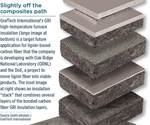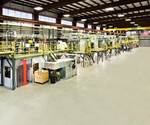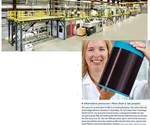Alternative precursor R&D: What are the alternatives to PAN?
Carbon fibers made from other precursors are in use, commercially, and many more precursor alternatives have been investigated.
Carbon fibers produced from high-quality polyacrylonitrile (PAN) precursor are typically the highest in quality, find use in structural composite parts (for example, commercial aircraft airframes) and thus have earned the descriptor aerospace-grade, and make up 95% of the current carbon fiber market. But carbon fibers made from other precursors are in use, commercially, and many more precursor alternatives have been investigated.
The best-known commercial alternatives are pitch and rayon. Pitch-based carbon fibers, first produced in the early 1960s by Union Carbide, now GrafTech (Independence, OH, US), are derived from the remnants of crude oil or coal distillation that are rich in aromatic hydrocarbons. The fibers can be formed without mechanical stretching, making them easier to process than PAN, but the result is finished carbon fibers with high modulus and excellent thermal conductivity, depending on the degree of processing and graphitization, but tensile strength lower than that found in PAN-based carbon fiber. Pitch fibers are used in applications that range from aircraft brakes to space satellite structures, where heat management is critical.
Rayon precursor, based on cellulose, dates to Thomas Edison’s first electric light bulbs, where fibers were used as the bulb filaments. Rayon-based carbon fibers, in a phenolic matrix, are still used to make ablative insulating material in solid rocket motors (SRMs), where they perform better than any other carbon fiber. The fibers’ crenulated (“dog bone”) cross section translates to good interlaminar shear performance and bonding with the phenolic resin, as well as low thermal conductivity. Virtually all rayon manufacturing has moved offshore of the US, but there is active research aimed at reshoring rayon fiber production: the University of Tennessee, together with the Air Force Research Laboratory (AFRL) and Advanced Cerametrics (Lambertville, NJ, US), has recently reported progress on an experimental rayon fiber-based carbon fiber.
Currently in the spotlight, lignin was first considered a viable candidate for carbon fibers decades ago. One example is Kayacarbon carbon fibers, produced by Nippon Kayaku Co. in the early 1970s. But, the patent literature reveals many more potential precursors, among them polyethylene (high density and low density), polyolefin, Saran (poly[vinylidene chloride]-polyvinyl chloride copolymer), polystyrene, polybutadiene, polyimide, phenol/hexamine and phenol/formaldehyde/ammonia, phenolic, aromatic polyamide 6/6, varieties of polyphenylene-benzothiazoles (PBZTs), and poly(p-phenylenebenzobisoxazole (PBO). All of these have been investigated at lab or pilot scale, with varying degrees of success and at projected lower costs than aerospace-grade PAN.
An excellent historical review of the investigations cited here is contained in the scientific journal Angewandte Chemie [Applied Chemistry] International Edition, 2014, by M.R. Buchmeiser, et al., published by Wiley-VCH Verlag GmbH & Co. (Weinheim, Germany).
This short article is a Side Story that accompanied CW's Feburary 2016 feature article titled, "Alternative precursor R&D: Lignin in the lightweighting limelight." To read the main article, click on its title under "Editor's Picks," at top right.
Related Content
-
Welding is not bonding
Discussion of the issues in our understanding of thermoplastic composite welded structures and certification of the latest materials and welding technologies for future airframes.
-
ASCEND program update: Designing next-gen, high-rate auto and aerospace composites
GKN Aerospace, McLaren Automotive and U.K.-based partners share goals and progress aiming at high-rate, Industry 4.0-enabled, sustainable materials and processes.
-
Cryo-compressed hydrogen, the best solution for storage and refueling stations?
Cryomotive’s CRYOGAS solution claims the highest storage density, lowest refueling cost and widest operating range without H2 losses while using one-fifth the carbon fiber required in compressed gas tanks.
















